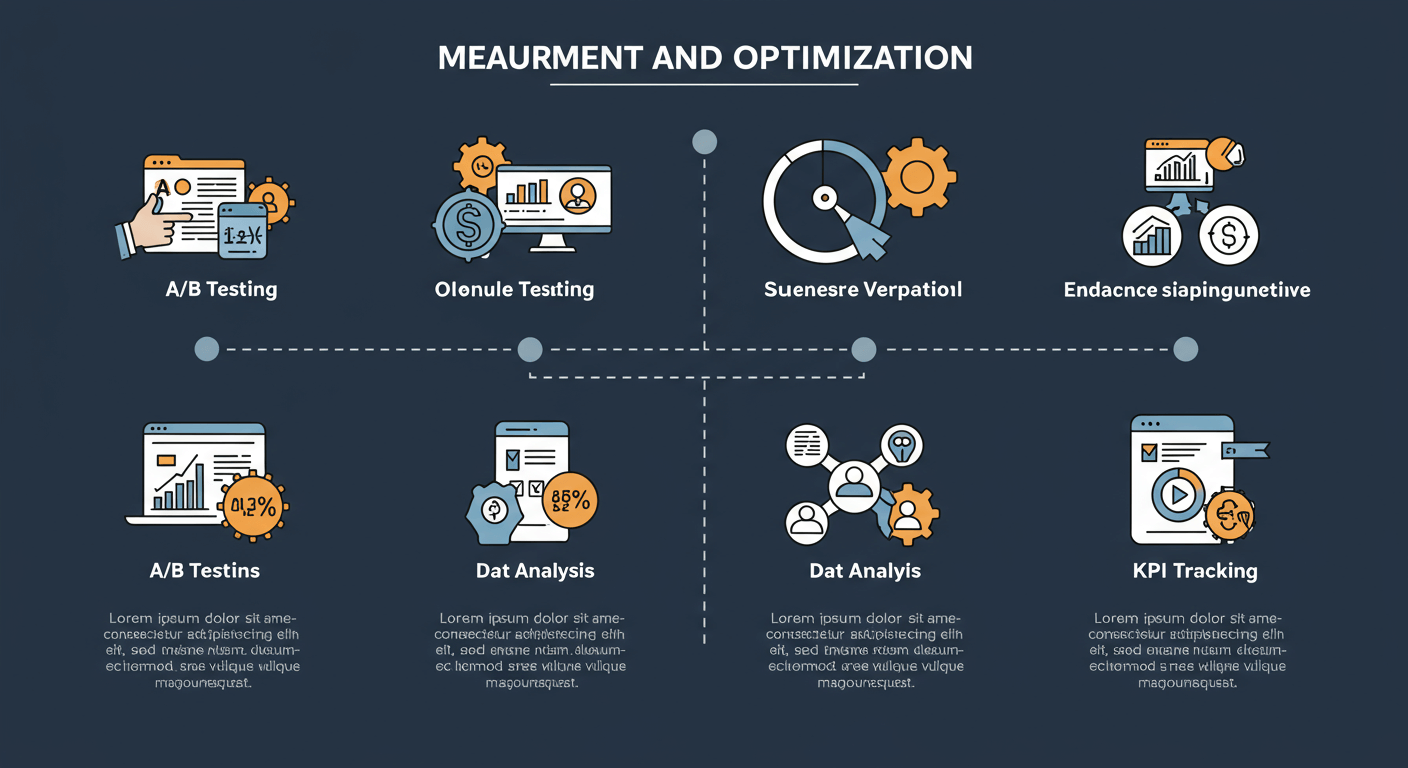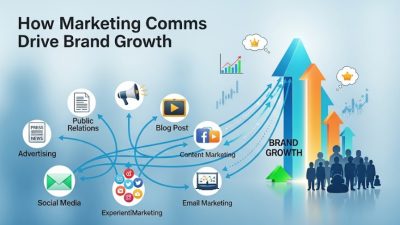Marketing communications can make or break your business success. Whether you’re launching a new product, building brand awareness, or driving conversions, how you communicate with your audience determines whether your message resonates or falls flat.
Yet many businesses struggle with fragmented messaging, inconsistent branding, and campaigns that fail to connect with their target market. The solution lies in understanding and implementing the fundamental elements that make marketing communications effective.
What Are Marketing Communications?

Marketing communications encompass all the methods and channels businesses use to convey messages to their target audiences. This includes everything from advertising and public relations to social media and direct marketing.
The goal is simple: deliver the right message to the right people at the right time through the most effective channels. When done correctly, marketing communications build brand awareness, generate leads, and drive profitable customer action.
Element 1: Clear Target Audience Definition
Your marketing communications must speak directly to specific people, not everyone. Understanding your target audience forms the foundation of every successful campaign.
Demographics and psychographics paint a complete picture of your ideal customers. Demographics include age, gender, income, and location, while psychographics reveal values, interests, and lifestyle preferences. This information guides every communication decision you make.
Customer personas bring your target audience to life. Create detailed profiles that include names, backgrounds, challenges, and goals. When writing marketing materials, reference these personas to ensure your messaging stays focused and relevant.
Audience segmentation allows you to tailor messages for different customer groups. A software company might communicate differently with small business owners versus enterprise decision-makers. Each segment receives content that addresses their specific needs and pain points.
Element 2: Compelling Brand Messaging
Your brand message answers why customers should choose you over competitors. It must be memorable, differentiated, and aligned with customer needs.
Value proposition clearly states the unique benefit you provide. Slack’s “Where work happens” immediately communicates its role as a central workspace platform. Your value proposition should be specific enough to stand out yet broad enough to appeal to your target market.
Brand personality humanizes your business through consistent tone and voice. Are you professional and trustworthy like IBM, or playful and approachable like Mailchimp? This personality should shine through every piece of communication.
Key messages support your main value proposition with specific benefits and proof points. Develop three to five core messages that highlight different aspects of your offering. These become building blocks for all your marketing materials.
Element 3: Strategic Channel Selection
Different audiences prefer different communication channels. Your job is to meet them where they already spend their time and attention.
Digital channels dominate modern marketing communications. Social media platforms like LinkedIn work well for B2B companies, while Instagram and TikTok excel for consumer brands. Email marketing remains highly effective for nurturing leads and maintaining customer relationships.
Traditional channels still play important roles in integrated campaigns. Television and radio reach broad audiences quickly, while print advertising can establish credibility and provide detailed information.
Channel integration amplifies your message across multiple touchpoints. A campaign might start with social media awareness, continue with email nurturing, and close with direct sales outreach. Each channel reinforces the others for maximum impact.
Element 4: Consistent Visual Identity
Visual elements create immediate brand recognition and convey professionalism. Consistency across all communications builds trust and memorability.
Logo and branding serve as your visual signature. Your logo should appear consistently across all materials, maintaining proper sizing, spacing, and color reproduction. Brand guidelines ensure everyone in your organization applies visual elements correctly.
Color schemes trigger emotional responses and aid recognition. McDonald’s red and yellow combination is instantly recognizable worldwide. Choose colors that align with your brand personality and appeal to your target audience.
Typography and imagery support your overall brand aesthetic. Professional service firms might use clean, serif fonts and corporate photography, while creative agencies could embrace bold, sans-serif typefaces and artistic imagery.
Element 5: Engaging Content Strategy
Content transforms features into benefits and connects emotionally with your audience. Great content educates, entertains, or inspires while subtly promoting your offerings.
Storytelling makes abstract concepts tangible and memorable. Instead of listing product features, tell stories about how customers use your solution to overcome challenges and achieve goals. Stories create emotional connections that drive purchasing decisions.
Educational content positions your brand as a trusted authority. Blog posts, whitepapers, and webinars that solve customer problems build credibility and nurture relationships over time. This approach works especially well for complex or high-consideration purchases.
User-generated content leverages customer enthusiasm to attract new prospects. Reviews, testimonials, and social media posts from real customers carry more weight than traditional advertising. Encourage satisfied customers to share their experiences across your communication channels.
Element 6: Strategic Timing and Frequency
When and how often you communicate affects message reception and customer relationships. Poor timing can waste resources, while optimal timing maximizes impact.
Campaign timing aligns with customer buying cycles and business objectives. Retailers ramp up communications before holiday shopping seasons, while B2B companies might time product launches with industry conferences or budget cycles.
Message frequency balances staying top-of-mind with avoiding audience fatigue. Email marketing typically performs well with weekly newsletters, while social media might require daily posting. Monitor engagement metrics to find the sweet spot for each channel.
Seasonal considerations influence both message content and timing. Tax software companies focus communications during tax season, while vacation rental businesses promote summer destinations in early spring when people start planning trips.
Element 7: Measurement and Optimization

Effective marketing communications require continuous monitoring and improvement. Without measurement, you can’t identify what’s working or optimize future campaigns.
Key performance indicators (KPIs) track progress toward your communication goals. Brand awareness campaigns might measure reach and impressions, while lead generation campaigns focus on conversion rates and cost per lead.
Analytics tools provide data needed for informed decision-making. Google Analytics tracks website performance, social media platforms offer built-in analytics, and email marketing services provide detailed engagement metrics.
A/B testing reveals what resonates best with your audience. Test different subject lines, calls-to-action, images, and messaging to optimize performance. Small improvements compound over time to significantly boost results.
Putting It All Together: Your Marketing Communications Action Plan
Successfully implementing these seven elements requires coordination and planning. Start by auditing your current communications against each element to identify gaps and opportunities.
Develop integrated campaigns that leverage multiple channels while maintaining consistent messaging and visual identity. Create content calendars that align with customer needs and business objectives. Most importantly, establish systems for measuring and optimizing performance.
Remember that effective marketing communications evolve over time. Customer preferences change, new channels emerge, and competitive landscapes shift. Regular reviews and updates keep your communications strategy fresh and effective.
Ready to transform your marketing communications? Begin with a thorough audience analysis, then systematically address each element. Your investment in strategic communications will pay dividends through stronger customer relationships and improved business results.
Meta data
Meta title
Meta description
Master the 7 essential elements of marketing communications. Learn proven strategies for messaging, channels, content, and optimization to boost your campaigns.




